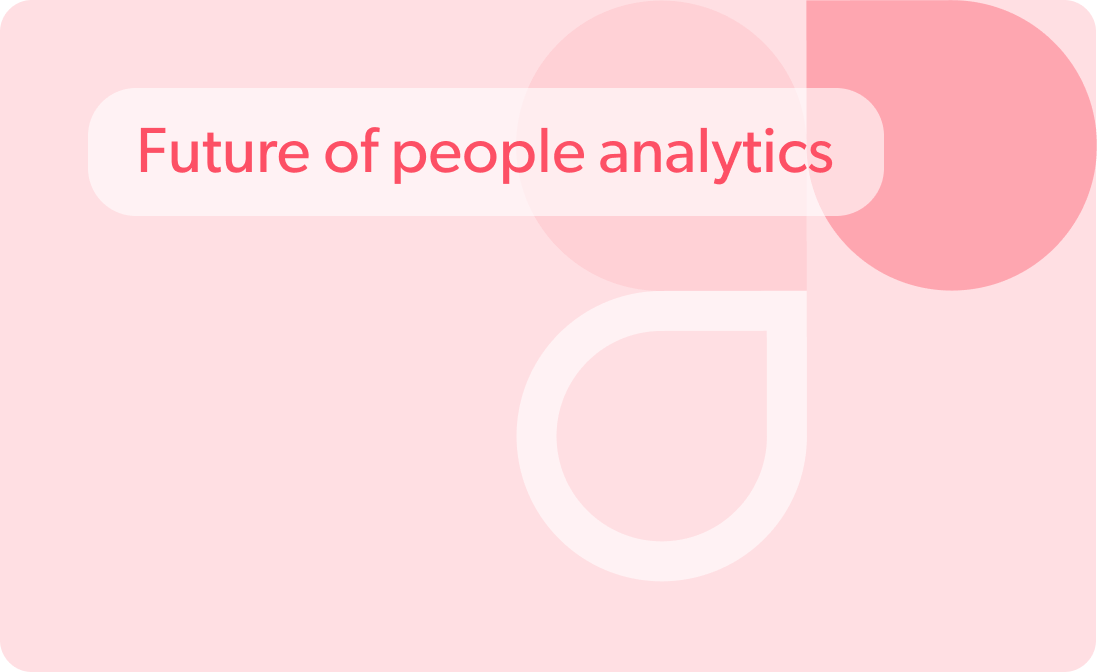Big data for HR: Everything you need to know
Big data and data analytics haven’t been the top priority of HR departments for long. But lately, HR has been becoming more and more data-oriented. Let’s see how data is transforming modern HR and how prominent companies are harnessing HR data.
Big data for HR: Key concepts
Big data refers to massive arrays of structured and unstructured information and methods for its processing and analysis. There are three V’s that define big data:
- volume – physical amount of space the data occupies in storage
- velocity – speed at which data is updated
- variety – range of data formats
Businesses retrieve big data from various sources including public sources on the internet (online publications, social networks, forums, etc.); historical data within the company, such as from archives; data from physical devices like entrance detectors; and so on.
You might wonder: Why use big data for HR if there are HR metrics and KPIs I could analyze?
Of course, HR metrics are beneficial. You can solve many HR problems with so-called small data at hand, using information about employees in Excel spreadsheets. However, as your business expands, spreadsheets won’t be able to analyze large and diverse layers of parameters. For example, big data helps you solve clustering tasks like distributing employees by category (benefits packages, demographics, and so on).
Benefits of using big data in HR
As HR is moving towards marketing, personalization, and ensuring a positive employee experience, it becomes clear you must build your talent pipeline just like sales managers build their sales funnels.
That’s when data steps in. Big data, in particular, provides vast possibilities to improve HR and recruitment workflows:
- Optimize your talent acquisition pipeline with automated recruitment tools that retrieve best matches, candidate analysis, and more. For example, IBM analyzed data on more than 40 million employees to detect the most relevant personality traits to look for in salespeople and tailor their job descriptions for better matches.
- Improve employee engagement and retention rates through detecting the activities that are most efficient at making employees stay with the company longer. Xerox managed to reduce employee attrition by 20% during their probation period by analyzing multiple parameters such as past experience.
- Improve learning and development activities.
- Enhance productivity. Xsolla took a dramatic step, firing more than 150 people after an in-depth productivity analysis that showed those employees were counter-productive and not engaged.
- Detect issues with employee health conditions, such as spikes in seasonal diseases, or track the tendency of workplace injuries.
- Create schedules based on workloads and other parameters. For example, Heineken uses big data for HR and production planning. The company analyzes their current stage of the production process, the state of the equipment, product stock, and seasonal fluctuations to create a production plan and plan their workforce capacity.
- Prevent negative events through forecasting based on past records.
Big data for skills management: The success story of Continental
In this case study, we share details of our cooperation with Continental, a leading German automotive company, to improve their skills management strategy. Discover our approach to sourcing and evaluating data and see the results achieved.
Obstacles to using big data for HR
Even though the advantages of big data in HR are clear, there are still few prominent examples of how businesses incorporate this technology into their HR workflows.
Primary reasons for the slow adoption of big data in HR include:
Cost and complexity of the technology. Sourcing and analyzing human resources big data requires hiring outsourcing specialists, setting up software, and building an IT infrastructure, which translates into significant investments. That’s why using big data for HR is still considered a luxury, not a necessity.
Data sourcing. It takes considerable efforts to acquire historical data, bring it into a unified format, interpret it, and analyze it on a regular basis. Also, big data . Without a significant amount of data (we’re talking about data on several thousand employees), it’s impossible to achieve relevant results.
Lack of experienced specialists. Despite growing interest in human resources big data, there’s an insignificant number of HR specialists with data analytics skills who make decisions.
Resistance from management. HR is all about people. That’s why one of the key concerns related to human resources big data and data analytics is leaving out the people part. HR managers still try to make decisions based on their gut feeling, which leads to increased risks of errors.
Legislation. In a nutshell, modern laws and regulations like the GDPR limit access to data and require consent from employees or potential candidates to collect and process data. In order to ensure legal compliance, you might get limited insights — or even none.
Long-term process. HR mainly operates with qualitative data. Let’s say we need to analyze factors that impact employee engagement. It takes years of thorough research to gather, interpret, and store the insights. Businesses obviously can’t wait that long.
How to use big data in HR
Here are a few essential tips to working with big data in HR:
- Work iteratively. The number of insights derived from big data analysis can be overwhelming. That’s why it makes sense to break down your research into smaller iterations and track small insights instead of trying to embrace everything at once.
- Consider your business objectives. Track and analyze actionable data that helps you solve current business goals rather than collect piles of unnecessary information that won’t change anything. The rule of thumb is to let the business goals be your guide, not the available data.
- Filter and clear the For example, DJ Patil, a data scientist and author of Data Jujitsu, states that 80% of data analysis work is clearing data to get rid of repeating, outdated, and misleading results.
- Keep your data sources versatile. Human resources big data likes a holistic approach, so don’t limit yourself to one data source, such as only internal databases.
- Be a data enthusiast. In most cases, an analytical mindset and basic data analysis skills are enough for simple operations with big data and validating colleagues’ or contractors’ work. Get to know more about must-have data-related skills you need to work with big data on a basic level.
Wrapping up
Human resources big data helps you cope with two key objectives. First, it provides current insights into employees and workflows. Second, it helps you identify valuable insights about possible future events and devise timely mechanisms to prevent or optimize them.
The idea that big data and data analytics are must-have tools for modern HR specialists in large enterprises shouldn’t come as a surprise. Rational use of data opens multiple advantages, including better work productivity, personalized learning and training opportunities, and improved talent acquisition strategies.
If you want to find out more about HRForecast tools that can help you use big data for HR to the fullest, contact us and we’ll get back to you promptly.
Stay up to date with our newsletter
Every month, we’ll send you a curated newsletter with our updates and the latest industry news.



























 info@hrforecast.de
info@hrforecast.de
 +49 89 215384810
+49 89 215384810






